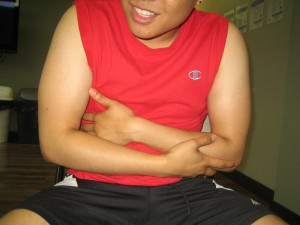The Anisakis worm is a parasite that causes serious infections among humans who consume raw fish. It can grow up to 2 cm long and oftentimes coughed up after ingesting it from raw or poorly cooked fish.
Accidental consumption of raw or poorly cooked marine fish harboring the infected larvae can result to an allergic reaction, oftentimes causing the individual to cough up the worms if swallowed. Once the worms penetrate the intestinal tissue, it results to anisakiasis.
One is at risk if raw or poorly cooked seafood was eaten. Take note that the parasite is typically found in haddock, cod, Pacific salmon, fluke, flounder, herring and monkfish.
What are the indications?

Once the Anisakis worm penetrates the intestinal tissue, it results to a localized inflammatory immune response which results to the signs of anisakiasis.
The usual signs include the following:
- Intense abdominal pain
- Vomiting
- Nausea
Once the intestine is infiltrated, the worm attracts the white blood cells, specifically the eosinophils and macrophages. This results to the formation of a mass of immune tissues known as granuloma.
Take note that the worms are generally eliminated from the intestines within 3 weeks of infection.
Management of Anisakis worm infection
The treatment for Anisakis worm infection involve surgical or endoscopic removal of the parasites.
In case the worm was not coughed up or vomited, it might penetrate the intestinal tissues. This causes a serious form of immune response that strikingly resemble appendicitis or Crohn’s disease.
